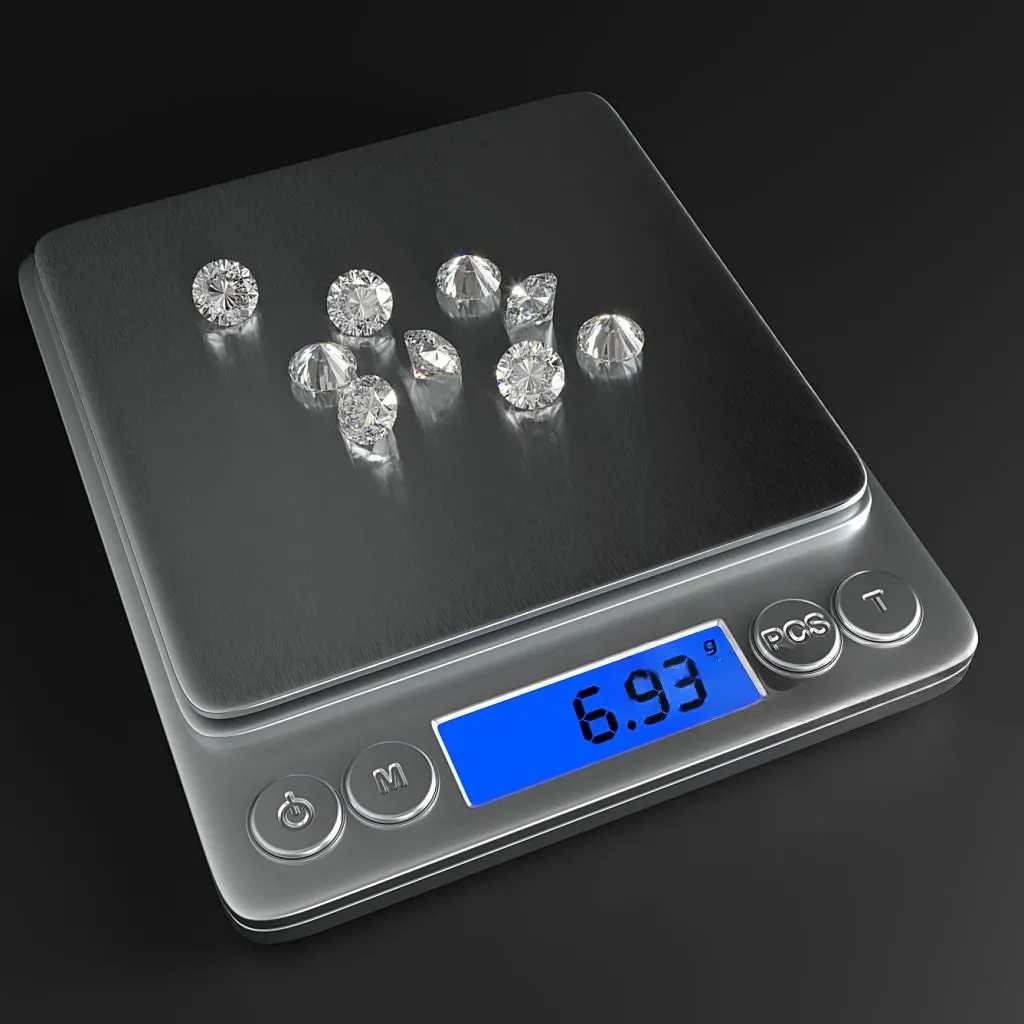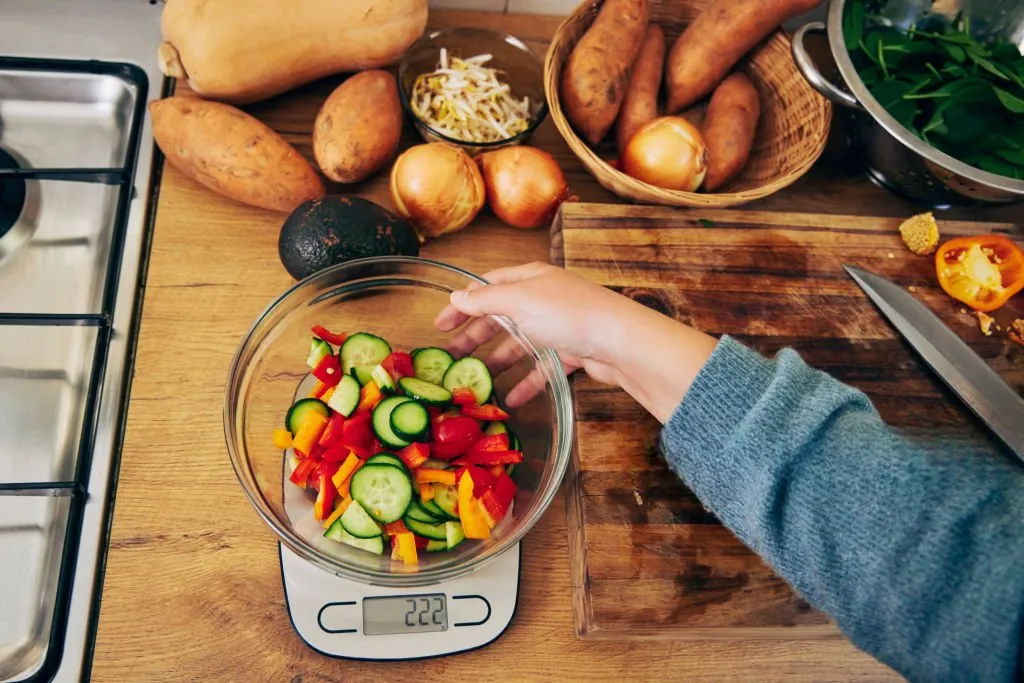In labs and industries globally, top-loading balances are essential for tasks requiring both decent capacity and precision, with typical readabilities of 0.001g or 0.01g. Their applications span from classroom education to high-volume production line QC.
Choosing the right model is challenging. Our 2025 guide cuts through the clutter by highlighting models that deliver proven reliability, feature the latest technology like seamless connectivity and intuitive touchscreens, and offer fast stabilization times.
Here is our curated list of the 10 most trusted top-loading balances for the year ahead.
I. 10 Featured Top-Loading Balances for 2025
The following models represent the current standard for performance, innovation, and overall value in their respective categories.
1. Ohaus Explorer Precision Balance
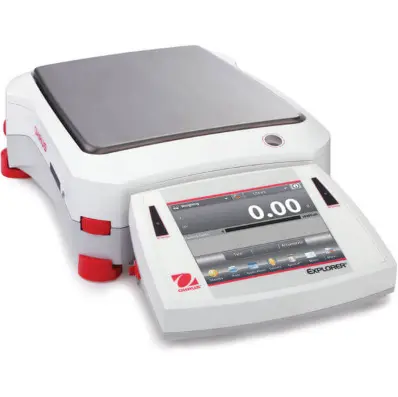
Ohaus’s flagship line successfully merges sophisticated performance with contemporary design aesthetics. In laboratory settings, we find its blend of accuracy and user-friendly features particularly impressive.
- Key Specifications: Readability ranges from 0.01g to 0.0001g (semi-micro models) with capacity extending to 35kg. Settling time typically reaches 1.5 seconds or faster. Features AutoCal™ internal calibration.
- Notable Features: The large customizable touchscreen and four non-contact sensors enable truly hands-free operation, significantly reducing contamination risks during repetitive weighing tasks.
- Practical Assessment: While its premium pricing positions it at the higher market tier, the Explorer delivers exceptional flexibility for both laboratory and industrial environments, especially where data connectivity options matter.
2. Stuccler SH-R Precision Series
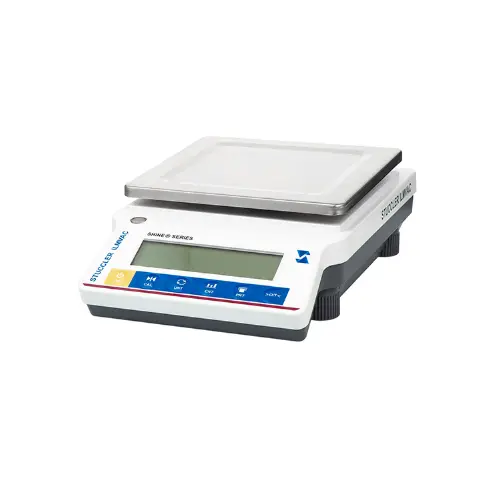
Stuccler emerges as a compelling competitor by focusing on essential robust features at accessible price points. These balances withstand demanding conditions where durability matters most.
- Key Specifications: Offers 0.1g to 0.01g readability with capacity reaching 20kg. Stabilizes in approximately 2.0 seconds. Utilizes external calibration with digital adjustment capabilities.
- Notable Features: Construction features fully aluminum and ABS housing with an adjustable vibration filter, making it surprisingly resilient in challenging environments.
- Practical Assessment: The SH-R series delivers outstanding value where budget constraints exist alongside the need for reliable high-capacity weighing, particularly in industrial and educational settings.
3. Mettler Toledo MS-TS Precision Balance
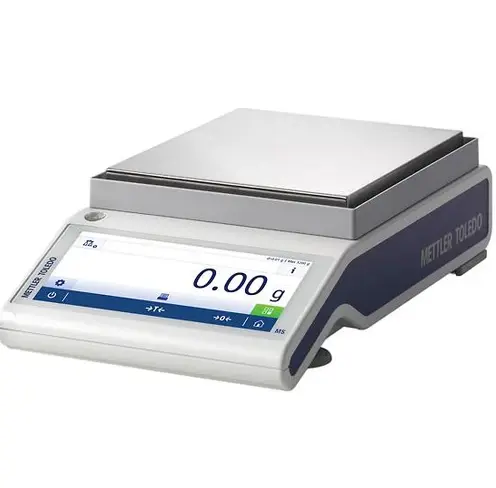
Mettler Toledo’s MS-TS line prioritizes workflow efficiency through intelligent error-prevention features, establishing itself as a premier choice for regulated industries.
- Key Specifications: Readability starts at 0.01g with capacity to 12kg. Achieves remarkable settling times often below 1.0 second. Incorporates internal FACT calibration.
- Notable Features: The LevelGuide graphical leveling aid and StatusLight™ indicator streamline setup and provide immediate operational status, effectively reducing potential user error.
- Practical Assessment: Despite higher total ownership costs, the MS-TS justifies its position through unparalleled compliance support in pharmaceutical and chemical applications where documentation requirements are stringent.
4. Sartorius Entris® II Precision Balance
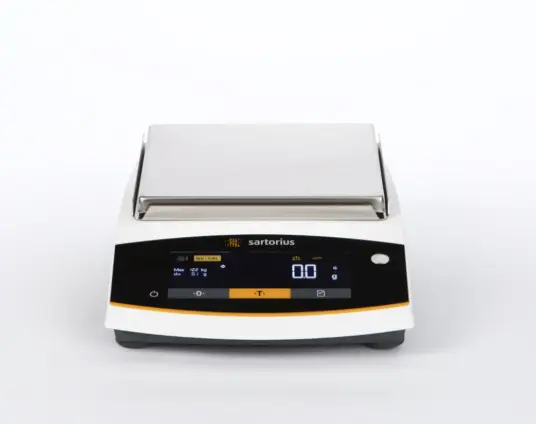
The Entris II earns recognition for straightforward operation backed by precise German engineering, delivering consistent performance across its entire weighing range.
- Key Specifications: Available in 0.01g and 0.001g resolutions with capacities to 8200g. Typically stabilizes within 1.5 seconds. Features internal isoCAL calibration.
- Notable Features: The color-coded LED touch display provides intuitive operation, while the cleverly designed draft shield on finer-resolution models offers both protection and accessibility.
- Practical Assessment: While networking capabilities may trail some competitors, the Entris II excels in contract research organizations and R&D labs where reproducible results and operational simplicity are paramount.
5. A&D GF-A Series High-Speed Precision Balance
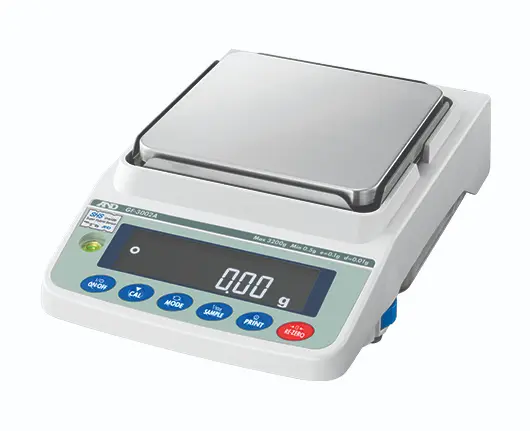
A&D’s GF-A series dedicates itself to achieving maximum speed without compromising ruggedness, targeting environments where throughput directly impacts productivity.
- Key Specifications: Offers 0.01g and 0.001g models with capacities to 10.2kg. Consistently delivers readings in under 1.0 second. Includes one-touch internal calibration.
- Notable Features: The proprietary Super Hybrid Sensor (SHS) technology enables its exceptional speed, while select models provide IP65 protection against dust and water intrusion.
- Practical Assessment: The functional display may lack graphical sophistication, but the GF-A’s blistering speed and environmental protection make it ideal for production line checkweighing and repetitive QC tasks.
6. Ohaus CX Series Compact Precision Balance
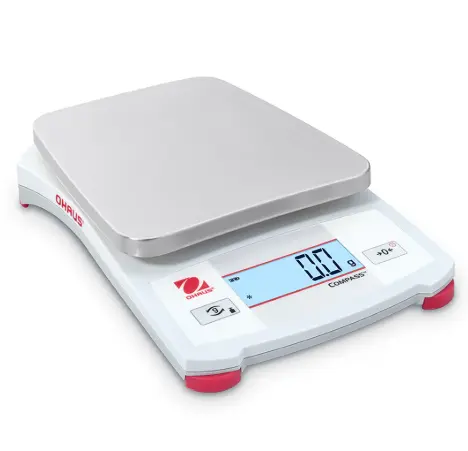
For users requiring mobility without sacrificing basic performance, the CX series delivers practical solutions in remarkably portable packages.
- Key Specifications: Readability ranges from 0.1g to 1g with capacity to 5000g. Settling time remains under 2.0 seconds. Uses external calibration.
- Notable Features: Its compact footprint and ability to operate up to 1,000 hours on standard AA batteries make it genuinely versatile for location-independent weighing.
- Practical Assessment: While accuracy doesn’t match professional laboratory grades, the CX provides excellent cost-effectiveness for field testing, inventory management, and mobile laboratory applications.
7. Kern PCB Precision Balance
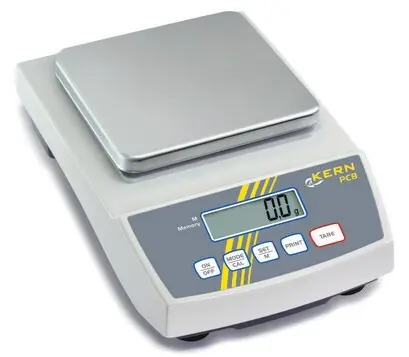
Kern’s PCB series represents the sensible middle ground, offering European engineering with versatile capacity options at accessible price points.
- Key Specifications: Readability spans 0.001g to 0.1g with capacity reaching 6kg. Settling time averages around 3.0 seconds. External calibration is standard (internal optional).
- Notable Features: Delivers impressive capacity relative to its footprint, complemented by a clear LCD display and optional battery operation for added flexibility.
- Practical Assessment: Though stabilization lags behind faster competitors, the PCB provides reliable service for general laboratory work and educational institutions needing straightforward precision instruments.
8. Adam Nimbus Precision Balance
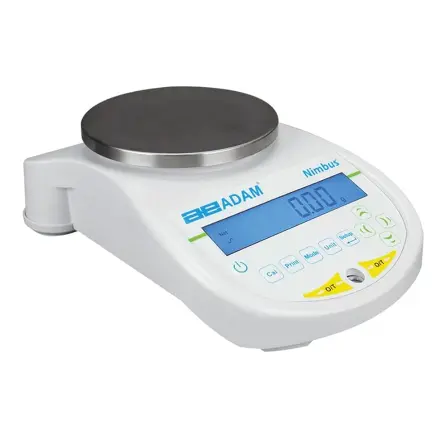
Adam Equipment’s Nimbus focuses on accommodating complex weighing tasks through advanced functionality, particularly useful in multi-user environments.
- Key Specifications: Offers 0.001g to 0.1g models with capacity to 6000g. Settling time ranges between 2.0-3.0 seconds. Features internal calibration via software.
- Notable Features: The multi-lingual display and unique user memory function allow personalized settings, while solid metal construction ensures long-term durability.
- Practical Assessment: The interface may feel less immediate than dedicated touchscreens, but the Nimbus excels in labs where multiple users perform routine applications like density measurement.
9. Radwag PS R2 Series Precision Balance
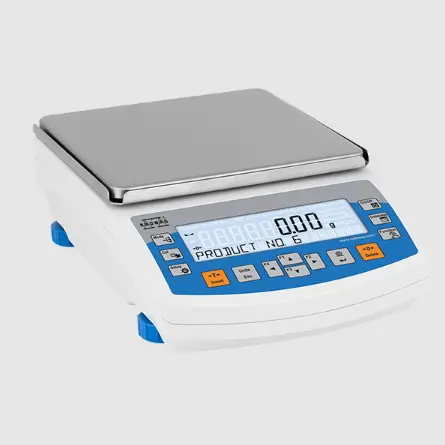
Radwag emphasizes sophisticated data management capabilities alongside high-quality internal components, appealing to laboratories where information integrity is crucial.
- Key Specifications: Readability from 0.01g to 0.001g with capacity to 10kg. Stabilizes in approximately 1.5 seconds. Incorporates internal calibration.
- Notable Features: The large graphic display clearly visualizes the weighing process, while extensive built-in database functionality supports direct storage of sample information.
- Practical Assessment: Despite potentially limited regional support, the PS R2 stands out for environmental testing and specialized processes where data traceability and management are priorities.
10. Rice Lake TC Series Toploader Balance
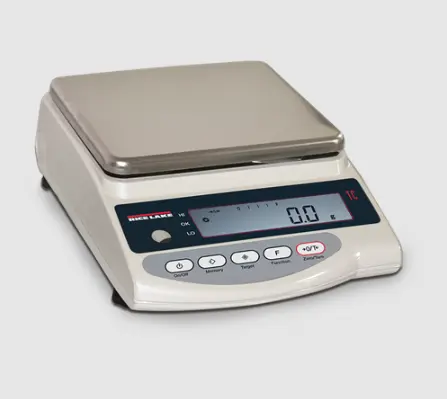
The TC Series employs unique Mono-Metal Tuning Fork Sensor (MMTS) technology to deliver fast stabilization and reliable performance, serving as a dependable workhorse for general lab and industrial use.
- Key Specifications: Readability from 0.01g to 0.1g with a 6200g capacity. Features ultra-fast settling times and external calibration.
- Notable Features: Utilizes Mono-Metal Tuning Fork Sensor (MMTS) technology for rapid, stable measurements. Includes a large backlit LCD with a capacity bar graph, plus built-in parts counting and percentage weighing functions.
- Practical Assessment: A robust and cost-effective workhorse ideal for general laboratory, educational, and light industrial QC applications. It delivers excellent speed and stability with standard RS-232 output, though it requires user-managed external weights for calibration.
II. Essential Selection Criteria
Choosing the optimal balance requires careful consideration of several key factors beyond brand reputation.
Readability Requirements
The choice between 0.001g and 0.01g models significantly impacts both cost and functionality. The finer 0.001g resolution becomes necessary for precise preparation and specialized research, while 0.01g typically suffices for routine batching and educational use. Selecting excessive resolution represents a common budgeting error.
Capacity and Practical Usage
Always verify the balance’s maximum capacity accommodates your heaviest typical samples including containers. Similarly, ensure the weighing pan physically accommodates your standard containers or bulk materials—insufficient pan size inevitably hinders workflow regardless of capacity.
Environmental Considerations
Precision balances remain sensitive instruments. Work areas experiencing vibration, airflow, or temperature fluctuations necessitate models with advanced filtering systems, or alternatively, balances with lower sensitivity 0.01g models handle environmental challenges better than 0.001g versions).
Calibration: Internal vs. External
Internal calibration systems (AutoCal, isoCAL, FACT) automatically maintain accuracy using built-in weights, correcting for temperature drift and saving significant time. External calibration requires manual application of certified weights—more budget-friendly but dependent on weight quality and user consistency.
Connectivity and Compliance
Modern laboratories demand connectivity. Ensure standard ports (RS-232/USB) are available, and consider models with LIMS/GLP integration for regulated environments requiring full traceability and documentation support.
III. Technology Outlook for 2025
The evolution of top-loading balances continues emphasizing integration, user experience, and adaptability.
Enhanced Connectivity
Network integration through Ethernet and Wi-Fi enables direct data streaming to cloud platforms and LIMS, eliminating manual transcription and significantly reducing error potential while improving traceability.
User Interface Innovations
Inspired by consumer technology, modern balances feature graphical touchscreens and intuitive software that guide users through complex applications. Contactless sensors for basic functions like Tare and Print are becoming standard, improving hygiene.
Ruggedized Designs
Manufacturers increasingly prioritize easy-to-clean surfaces with seamless edges and removable stainless steel pans. Improved internal filtering allows reliable operation in environments with minor vibrations or temperature variations, expanding suitable applications beyond traditional laboratory settings.
IV. Conclusion
Selecting the ideal top-loading balance for 2025 involves carefully matching instrument capabilities to your specific operational requirements. The models presented here represent the current performance leaders across different application segments. By applying the practical selection criteria outlined in this guide, you can confidently choose a balance that will deliver accurate, dependable performance through 2025 and beyond.


